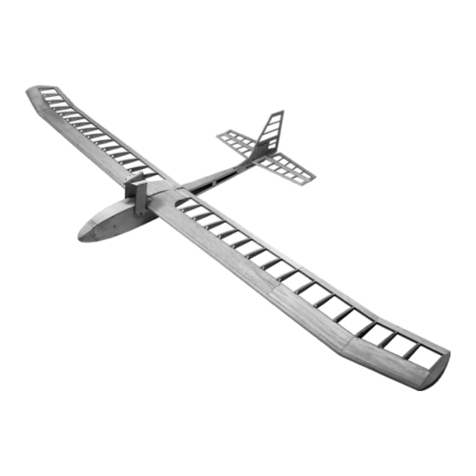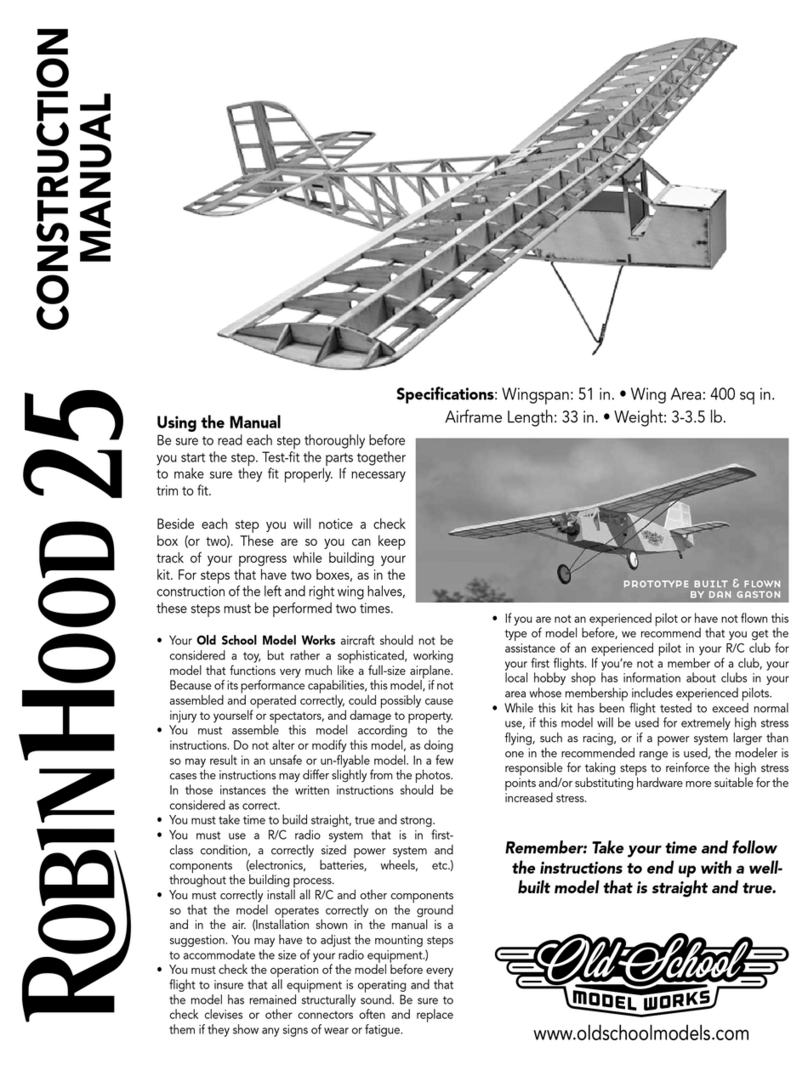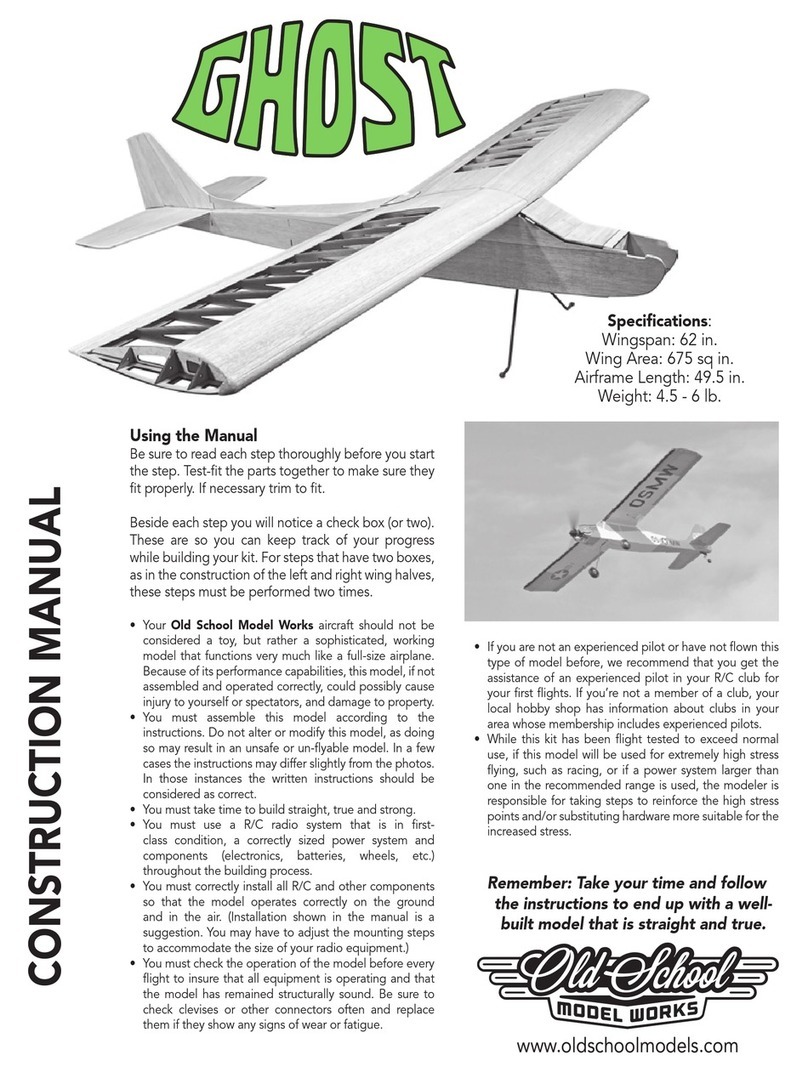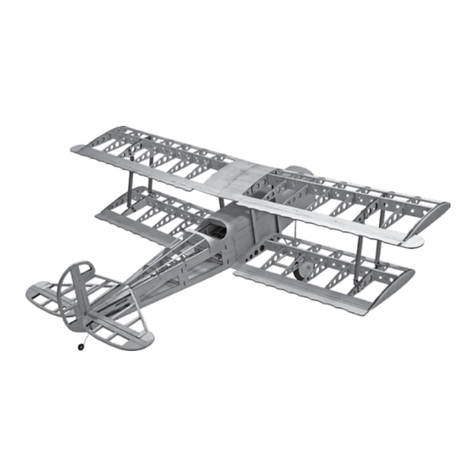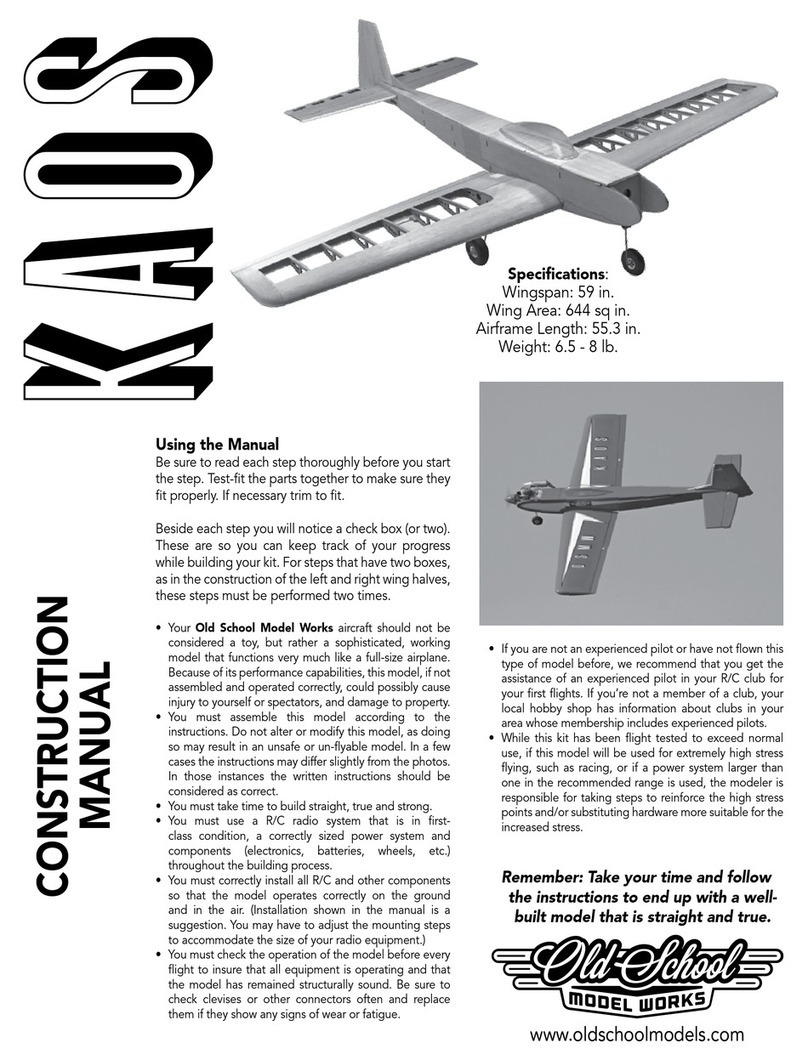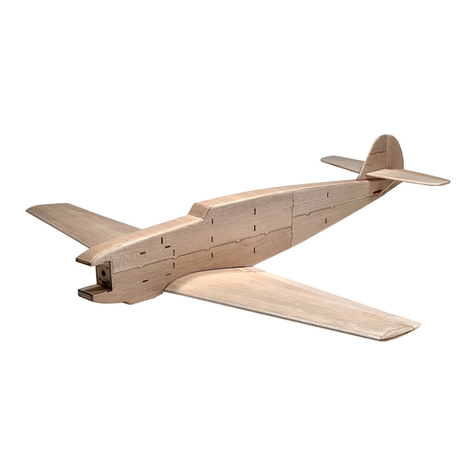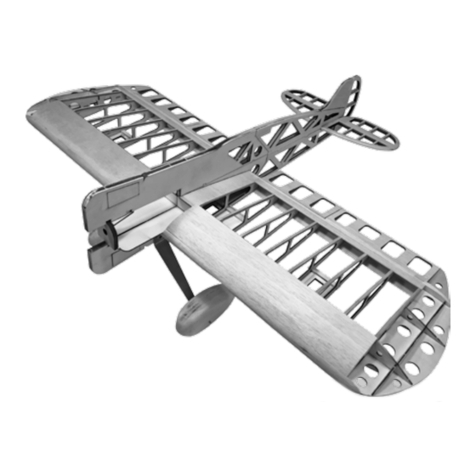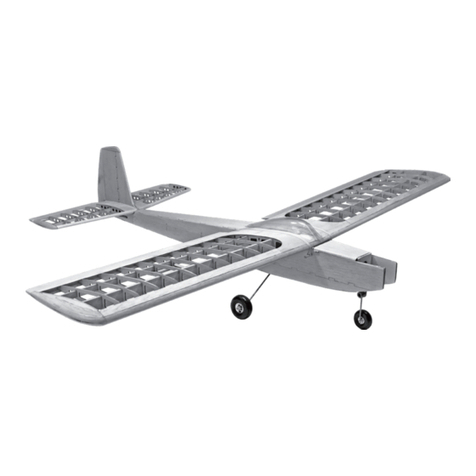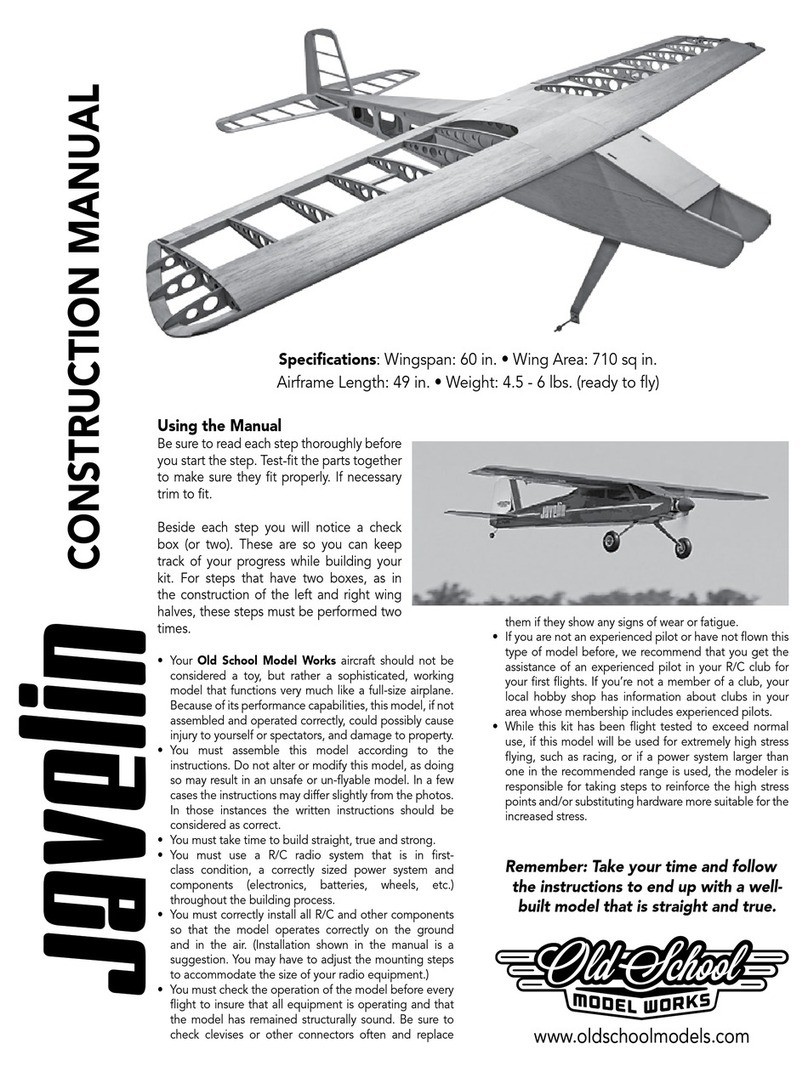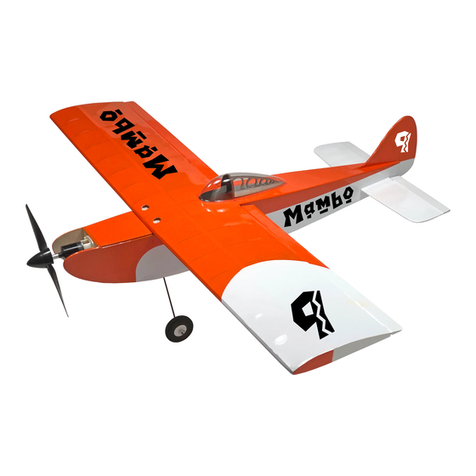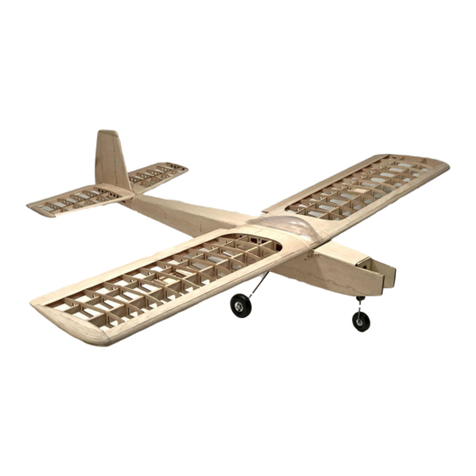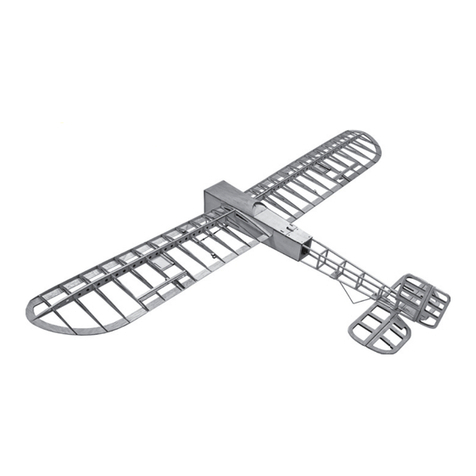
Construction Manual www.oldschoolmodels.com Page 3
• 6 and 30 minute epoxy
• Epoxy brushes and mixing sticks
• Threadlocking compound
• Canopy glue
Before Starting Assembly
The Comet should only be built by an experienced builder. If
you’ve never built a kit before it’s quite possible you will have a
great deal of difficulty building this kit successfully.
Closely inspect the supplied laser cut parts for damage. If you find
any damaged or missing parts, contact us immediately.
When removing the laser cut parts from their sheets, you’ll notice
the parts are held in place by several very small “tabs”. These tabs
are uncut pieces of wood and can sometimes make it difficult to
remove a part. Rather than breaking and/or splintering the wood
by forcing out the part, we recommend removing any laser cut
parts from their sheets by using a hobby knife with a new, sharp
blade. A quick cut of the tab will allow the piece to be removed
with no damage. Sand any remainders flush with the part so there
will be no problem aligning them later.
THE COMET USES RIBS THAT HAVE LARGER ALIGNMENT
TABS. IT IS IMPORTANT THAT THESE TABS REMAIN ON
THE PIECES TO AID IN BUILDING A STRAIGHT AND TRUE
MODEL. IF YOU DO BREAK OFF A TAB, IMMEDIATELY
TACK-GLUE IT BACK TO THE PIECE.
It’s best to not remove parts from their sheets until they are needed.
Refer to Appendix A of this manual as a reference to what all the
laser cut parts look like and are called.
For each step, we highly recommend that you dry fit the parts in
each step first. Lightly sand as needed to ensure a good fit. Once
you’re satisfied with the fit, then and only then, glue the parts in
position.
IT IS VERY IMPORTANT THAT YOU ASSEMBLE THIS KIT
IN THE ORDER DESCRIBED. SKIPPING FORWARD IN
THE STEPS COULD LEAVE YOU WITHOUT THE PROPER
LENGTHS OF WOOD TO FINISH THE KIT.
WE’VE INCLUDED ENOUGH WOOD TO EASILY COMPLETE
THIS KIT, BUT YOU MUST TAKE CARE TO PROPERLY
MEASURE AND NOT WASTE WOOD WHEN CUTTING.
All photos shown in this manual were of the prototype Comet.
Several pieces have changed slightly with improvements we’ve
made so they might look a little different in some steps.
Online Supplementary Photos
We realize that the smaller black-and-
white photos in this manual might not
show some of the steps as clearly as
you might want. So we’ve anticipated
this and made these photos available
on our website. You can either scan the
QR code or type this address into your
browser:
www.oldschoolmodels.com/mpics/comet
Let’s begin construction by working on the center section of
the Comet.
Prepare your work area
You’ll need a flat building surface that is a minimum of 40” wide as
the Comet is built as a one-piece airframe.
Cut out the nose section of the plans along the dotted line, then
tape this section in place on the plans to form a 1-piece plan with
the nose section attached.
Position plan over your building surface and tape into position.
Tear off a few lengths of waxed paper to cover plan, then tape
them into position, covering the plan.
Step 1 - Alignment triangle
Pre-cut into LP3 is a triangle, that
can be used to vertically align any of
the parts in the construction of your
Comet. LP3 also includes a foot piece
that can be used with the triangle,
holding the triangle vertical hands-
free.
Step 2 - Center Section (nose gear mount)
Locate both F5 pieces from the LP2
sheets. Glue both of these pieces
together to form a thicker F5. This
will be the mount for the nose gear.
Note that the shape of this piece
has changed from what’s shown
here to include a cutout to allow air
and tubing to pass through.
Step 3 - Center Section (mount nose gear block)
In your Comet kit, there is a separate
hardware bag which contains all the
pieces to assemble the nose gear.
From this bag, locate the nose gear
mounting block, the 4 mounting
screws and the 4 t-nuts from this
package. Use these pieces to
mount the nose gear block to the
assembled F5 as shown here.
You may need to use a cutoff wheel to trim the screws length after
they are installed.
Step 4 - Center Section (R1As)
Locate both R1A and R1B pieces from
the LP1 sheets. Align the curvy cuts
in R1A and R1B to create a finished
R1. Pay attention when joining so you
align the engraved circles next to each
other. Make two finished R1 pieces.
Step 5 - Center Section (attach
nose gear block)
Take one of the completed R1 pieces
and glue the F5 assembly to it. Make
sure it is 90° from the side and the nose
gear block is positioned as shown here.
